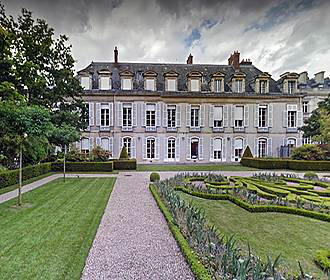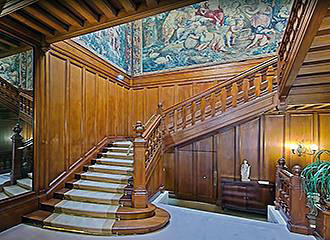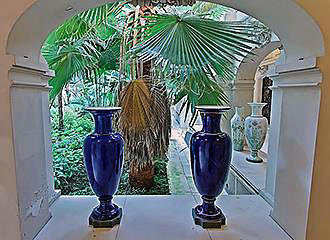Paris Petit Luxembourg Palace History
Known in French as La Residence des Presidents de la Haute Assemblee, the Petit Luxembourg has been home to the French President of the High Assembly since 1825, yet the history of this palace dates from centuries before.
Petit Luxembourg Palace beginnings
The original Hotel Particular, or mansion house, was constructed roughly in the mid 1500s, although there has been no documentation found to establish who the architect was, who the building was first constructed for, or the exact date.
However, the first true details emerge when it was purchased by Francois de Luxembourg, Duc de Piney in 1570, which is why the mansion became known as the Hotel de Luxembourg, yet in 1612 it was purchased by Marie de Medici, with its land.
The wife of King Henri IV before he was assassinated, and regent for their son, King Louis XIII, Marie de Medici did not enjoy residing at the Palais du Louvre and decided to construct her own palace based upon where she grew up in Florence, Italy. And while the new chateau was being constructed, she lived within the Hotel de Luxembourg, that became known as the Petit Luxembourg to distinguish it from the larger palace next door.
Once she had moved into the Palais du Luxembourg in 1627, Marie de Medici gave the Petit Luxembourg Palace to Cardinal Richelieu while he was having his own palace constructed, which was first of called the Palais Cardinal, but is now known as the Palais Royal that is located on the Rue Saint-Honore in the 1st Arrondissement of Paris.
Paris Petit Luxembourg Palace the late 1600s
Cardinal Richelieu bequeathed the Petit Luxembourg Palace to his niece, Marie, Duchesse d’Aiguillon, and upon her death in the 1670s it passed to the Grande Conde, and then by inheritance again, it went to his son, Jules-Henri de Bourbon-Conde.
The Petit Luxembourg Palace was then owned by Anne of Bavaria, who was the widow of Henri-Jules de Bourbon-Conde, and up until around the 1716 she made many changes including enlarging the palace and changing the interior, with some of these features still being preserved to this day.
Later in the same century, the Dowager Queen of Spain, Louise Elisabeth d’Orleans resided at the Petit Luxembourg, where she died in 1742, and then the Duchess of Modena, Charlotte Aglae d’Orleans also resided there upon her return to Paris from her travels in Europe, and she also died at the Petit Luxembourg in 1761, and was buried at the Val-de-Grace Church located close by.
The Empire and Petit Luxembourg Palace until today
Eventually, the Petit Luxembourg was owned by the Empire and Napoleon Bonaparte along with his wife Josephine made it their residence in 1799, and the Conseil d’Etat, or Council of State, was also in place there from the December of the same year.
And from 1800 to 1814 the Senate was within the Petit Luxembourg Palace until they were ready to be installed within the grand Palais du Luxembourg.
It then became the home of the French President of the High Assembly in 1825, and through tradition, this beautiful palace still remains the home to the president of the Senate or High Assembly, which is known in French as La Residence des Presidents de la Haute Assemblee.


